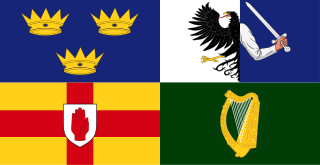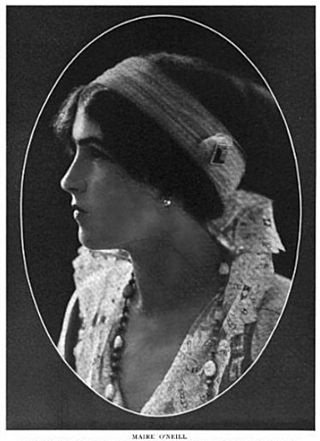Related Research Articles

The Abbey Theatre, also known as the National Theatre of Ireland, in Dublin, Ireland, is one of the country's leading cultural institutions. First opening to the public on 27 December 1904, and moved from its original building after a fire in 1951, it has remained active to the present day. The Abbey was the first state-subsidized theatre in the English-speaking world; from 1925 onwards it received an annual subsidy from the Irish Free State. Since July 1966, the Abbey has been located at 26 Lower Abbey Street, Dublin 1.

Isabella Augusta, Lady Gregory was an Irish dramatist, folklorist and theatre manager. With William Butler Yeats and Edward Martyn, she co-founded the Irish Literary Theatre and the Abbey Theatre, and wrote numerous short works for both companies. Lady Gregory produced a number of books of retellings of stories taken from Irish mythology. Born into a class that identified closely with British rule, she turned against it. Her conversion to cultural nationalism, as evidenced by her writings, was emblematic of many of the political struggles to occur in Ireland during her lifetime.

The history of Irish theatre begins in the Middle Ages and was for a long time confined to the courts of the Gaelic and "Old English" – descendants of 12th-century Norman invaders – inhabitants of Ireland. The first theatre building in Ireland was the Werburgh Street Theatre, founded in 1637, followed by the Smock Alley Theatre in 1662.
The Irish Literary Revival was a flowering of Irish literary talent in the late 19th and early 20th century. It includes works of poetry, music, art, and literature.

Padraic Colum was an Irish poet, novelist, dramatist, biographer, playwright, children's author and collector of folklore. He was one of the leading figures of the Irish Literary Revival.
W. B. Yeats, Lady Gregory and Edward Martyn published a "Manifesto for Irish Literary Theatre" in 1897, in which they proclaimed their intention of establishing a national theatre for Ireland.

William George Fay was an actor and theatre producer who was one of the co-founders of the Abbey Theatre.
Frank Fay (1870–1931), older brother of William Fay, was an actor and co-founder of the Abbey Theatre in Dublin, Ireland. He worked with his brother, William, staging productions in halls around the city. Finally, they formed W. G. Fay's Irish National Dramatic Company, focused on the development of Irish acting talent.
Anne Butler Yeats was an Irish painter, costume and stage designer.

Maire O'Neill was an Irish actress of stage and film. She holds a place in theatre history as the first actress to interpret the lead character of Pegeen Mike Flaherty in John Millington Synge's controversial masterpiece The Playboy of the Western World (1907).

Dudley Digges was an Irish stage actor, director, and producer as well as a film actor. Although he gained his initial theatre training and acting experience in Ireland, the vast majority of Digges' career was spent in the United States, where over the span of 43 years he worked in hundreds of stage productions and performed in over 50 films.

Sarah Ellen Allgood, known as Sara Allgood, was an Irish-American actress. She first studied drama with the Irish nationalist Daughters of Ireland and was at the opening of the Irish National Theatre Society.
David Kenny is a journalist, broadcaster, best-selling author and songwriter living in Dublin, Ireland.

Máire Nic Shiubhlaigh was an Irish actress and republican activist. She started acting in her teens and appeared in the first Irish-language play performed in Ireland. She was a founder-member of the Abbey Theatre and was leading lady on its opening night in 1904, when she played the title role in W.B. Yeats's Cathleen Ni Houlihan. She later joined the Theatre of Ireland, which she helped to found.

Evelyn Gleeson was an English embroidery, carpet, and tapestry designer, who along with Elizabeth and Lily Yeats established the Dun Emer Press.
Helen Laird (1874–1957), was an Irish actress also known as ‘Honor Lavelle’, a costumier, teacher, and feminist.

Shelah Geraldine Richards, was an Irish actress, manager, director and producer.
Maire Quinn was an Irish actress and republican activist, and one of the founding members of the Irish National Theatre Society.
The Dun Emer Guild (1902–1964) was an Irish Arts and Crafts textile studio founded in 1902 by Evelyn Gleeson, initially in partnership with Elizabeth and Lily Yeats as Dun Emer Industries and Press.

Damer Hall, also known as Damer Theatre and An Damer, is a former theatre and former school located in the basement of the Dublin Unitarian Church at 112 St Stephen's Green in Dublin, Ireland.